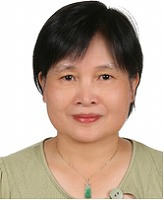SEMINAR
May, 24
T4-8-4
International Session(AI, Smart Factory, Security, etc.)
| 15:40 - 16:20 |
Augmenting Human Minds – From Artificial Intelligence to Intelligence
Amplification
Andreas Dengel
Member of the Management Board / Scientific Director German Research Center for Artificial Intelligence (DFKI), Germany Andreas Dengel Member of the Management Board / Scientific Director German Research Center for Artificial Intelligence (DFKI), Germany  Outline Based on the availability of data, more and more cognitive tasks can be transferred to a machine that learns from the behavior of individuals and crowds to increase our understanding, our problem-solving capacity, or to help us remember. Intelligence amplification, unlike artificial intelligence, describes a future in which man and machine are closely connected and in which their individual cognitive abilities complement each other or expand the limits of thought, leading to more efficient, natural and pleasant interactions. Based on the original vision of man-machine symbiosis, this presentation provides insights into approaches to behavioral analysis, big data analytics, deep learning and cognitive computing. Three applications are addressed in which these digital companions have great potential, namely attention-based image processing systems, social media mining and multi-perspective memory aids. |
|---|---|
| 16:20 - 16:50 |
Wireless communication, sensors and Artificial Intelligence are enabling the next generation of Intelligent Things at the Edge
Marc Duranton
CEA Fellow, Architecture, IC design and Embedded Software Division CEA Tech, France DURANTON MARC CEA Fellow, Architecture, IC design and Embedded Software Division CEA Tech, France  Outline The Internet of (dumb) Things will be evolving into a fog of intelligent devices, connected and interacting with their environment. Thanks to the progress of Artificial Intelligence (especially Deep Learning), smart sensors, precise localization, sensor fusion, and efficient wireless technologies, the end devices will interact more with the environment and will offer more services. These Cognitive Cyber-Physical Systems (like self-driving cars, home robots, …) will rely on their local resources but also on their pair's resources or the resources of the cloud enabled by energy efficient wireless communications that will adapt dynamically to the different needs. This presentation will highlight some necessary ingredients for the emergence of this new generation of Cognitive Cyber-Physical Systems. |
| 16:50 - 17:20 |
CyberEU (Cyber Escort Unit) : Hardware-enabled cybersecurity against ROP attacks
Sylvain Guilley
Co-founder and CTO Secure-IC, France Sylvain Guilley Co-founder and CTO Secure-IC, France  Outline - The cyberspace of IoTs is still victim of many hacks exploiting memory corruption to hijack the control program flow, typically through ROP (Return Oriented Programming) attacks.- Such exploits are hard to detect even using good coding principles and static analysis. They thus remain undetected and stay in software, as "0-day" backdoors. - In this talk, we will present Cyber Escort Unit (CyberEU), a hardware co-processor which monitors the execution flow at the instruction cache level, and which detects memory corruptions (incorrect jumps, branches, interrupts, function calls & returns). This technology allows to detect in real-time 0-day attacks consisting in abusing memory errors in program binaries. |
| 17:20 - 17:50 |
Towards 5G Enterprise System Solution
Li-Fung Chang
Chief Architect, 5G Technology Program Office, Department of Industrial Technology (DoIT) Ministry of Economy Affairs (MOEA), Taiwan Li-Fung Chang Chief Architect, 5G Technology Program Office, Department of Industrial Technology (DoIT) Ministry of Economy Affairs (MOEA), Taiwan  Outline 3GPP has released R15 5GNR technical specifications for NSA (Non-Stand Alone) and SA (Stand Alone) on Dec. 2017 and on March 2018, respectively. Though there are still some details to be clarified/specified, operators and vendors are planning to work on interoperability development tests, field tests, pre-commercial trails between now and 2020. From the current progress, it is clear that 5G commercial system will be launched in 2020 by operators in many cities globally as planned.As 5G is envisioned to offer services to not only traditional applications via smart phones but also different vertical applications via devices/modules (“THINGS”), demonstrations via “THINGS” have also shown in many venues. Vertical applications include product lifecycle management, efficient manufacturing in smart factory, robotic arm controls, AR/VR, automotive, etc. Market analysis predicts that vertical applications in the above-mentioned areas will bring tremendous revenue and business opportunities in new services enabled by 5G system. This type of the 5G system can be a customized enterprise system or part of the operator managed system. In this talk, we will discuss 5G enterprise system solution that consists of standalone or cloud-RAN based small cells, virtualized edge and light core network micro service modules. We anticipate a configurable system solution that can provide services for different vertical applications. We will show sample example in this talk as well. |
Other seminars (mostly in Japanese)
Please refer to the seminar information on Japanese website.
How to register
Please register yourself from here!
[ Attention ]
The seminar sites are located inside the exhibition hall.
Please be reminded to complete on-line pre-registration to enter the WTP 2018 venue, in addition to the registration for seminars, and you will be able to receive the entry card at the reception desk.









